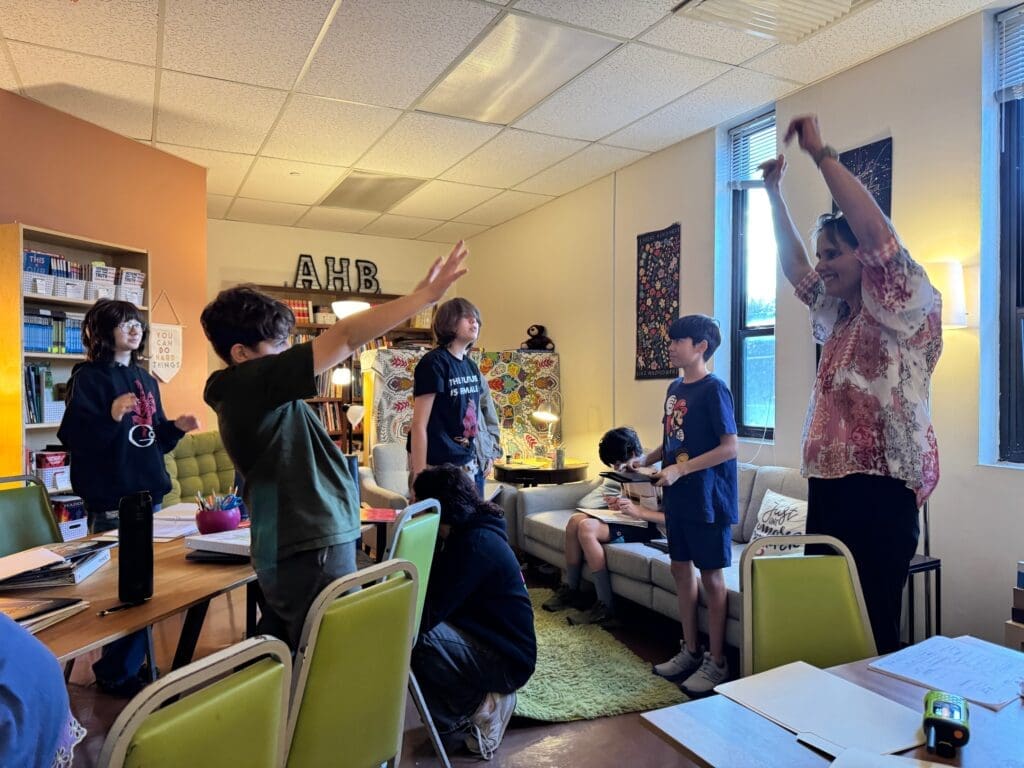Math:
Both the Marionettes and the Saplings are on their last unit over statistics! They had lessons over measures of center and measures of variability. The Algebra students worked hard on their escape room. They should now be ready for their check-in on Monday. All students are taking their last check-ins next week.
ELA:
The countdown is on! We started wrapping up ELA this week by turning in literary essays about the novels students just finished. Phew! Another elephant eaten one bite at a time. We also analyzed the poem, “Harlem” by Langston Hughes by looking for rhyme scheme, figurative language, spacing of lines, and mood, as well as defining unfamiliar words– so critical to understanding poetry. Students made personal, real world, and literary connections.
Tuesday and Wednesday students watched the Wes Anderson film, “Isle of Dogs” while I pulled students individually for Fountas & Pinnell reading assessments.
On Thursday we jumped into our very last ELA concept of the year: static vs. dynamic characters. We began with a slideshow containing the definitions of each and including pictures of popular cultural/literary characters. Classes discussed how those characters fit into either “static” or “dynamic” classification. Next, they made a small flip book which included the elements of each and invented their own mnemonic device to help remember the difference between the new ideas. Finally, they used post-it notes to sort characters from all of this year’s literature to classify characters. The Saplings and Marionettes ended the lesson by “voting” for a classification by moving to one side of the room or the other and then defending their position in hopes of swaying others to their side.
Theme:
Wrapping up the last topic in our Q4 theme of Ecology, students dove into the processes of the Water Cycle. We started the week defining the nine processes within the water cycle and diagrammed them. Students applied the water cycle to develop a short story about a water molecule’s journey fro, precipitation back to condensation through the cycle. Studies were spontaneously read throughout the class period once completed.
Two lab opportunities gave Theme students the chance to apply and analyze issues relating to the water cycle. In a thinking lab, the students challenged themselves to solve water issues ranging from pollution to climate change. Students also experimented with Fog Harvesting, one of the methods by which people try to combat water scarcity. They modeled fog with small sprayers onto a fog catcher and documented the effects including weight distribution of their apparatus. They noticed an increase in the weight due to the retaining of water through the harvesting device. We ended the week creating Cladogram charts for our research projects on evolution and taxonomy. Projects and skits will be due next week. We are all looking forward to the results and our field trip to the Cameron Park zoo in Waco.


At top, students rehearse their Taxonomy skits for their presentations on organism classification. Above, a flex time activity helped students practice teamwork on communication.

Theme students work with sprayers and fog catchers to experiment with water scarcity, one of the many issues with the water cycle investigated this week.


Theme students document results from the water cycle experiment with fog harvesting.




